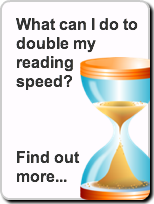In my last two posts I showed you how you can tackle the Introduction and Summary sections of a report.
Communicado: Business Communications Blog
Topics: Report Writing, Communication skills
Creating Audience Focused Report Writing Headings
Posted by Andrew Jackson on Jun 11,2010 @ 03:33 PM
My colleague Robert Good recently wrote about creating effective report introductions - a difficult task at the best of times. Another area that can fall into the difficult category is report writing headings. There are quite a few questions about this from writers. I've briefly answered the most frequently-asked below:
Topics: Report Writing, Communication skills
When you are writing a report summary, in effect you are creating a cheat-sheet for your reader. As such, the summary needs to be a short, complete and accurate account of what you have already written in the main body of your report.
Incidentally, if you have not yet started to write the report, writing the summary can be a great way of deciding what to include and how to structure it.
Topics: Report Writing, Communication skills
Writing a report introduction can be a surprisingly tricky affair – deciding what to include and what to leave out inevitably means editing down your perfectly-formed report: a report that you would ideally like the reader to sit down and take the time to read carefully and thoroughly!
So here are some practical tips to get you on the right track and help focus your reader on the important stuff from the outset.
When you are writing a report introduction, make it directly relevant to your reader. For example, imagine there is a small change in regulations that affect your organisation. Often in this situation, a report will be circulated to everybody for information. A typical introduction to such a report might start like this:
“This report sets out the changes to the XYZ regulations (sections 3 and 5). The regulations come into effect on June 1st. A copy of the changes will be filed in our procedures manual.”
Unless your reader has plenty of time to spare, this might end up unread. Instead, you need to get their attention:
“We will be directly impacted by small but important changes to the XYZ regulations that come into effect on June 1st.”
Notice that the detail – that is, sections 3 and 5 – were omitted: keep focussed on the main message. You can then tell your reader what the report contains:
“Page 1 describes the changes in detail and includes a quick summary; Page 2 sets out the new end-of-day procedure that will be implemented to ensure that we remain compliant.”
Finally, a call to action rounds off the introduction nicely. Tell your reader what they now need to do:
Topics: Report Writing, Communication skills
One of my favourite comedy sketches is “Numberwang” from “That Mitchell and Webb Look”. Numberwang (in case you didn’t know…) is a spoof gameshow in which contestants call out numbers – seemingly at random – until the host declares “That’s Numberwang!”. OK, I know I may not have quite sold it to you, but somehow Mitchell and Webb manage to make this slight joke into something very funny – have a look on YouTube and see what you think.
Anyway, the reason I mention Numberwang is that I was reminded of it the other day when looking through some documents that I needed to review. I was bombarded by more numbers than a Numberwang show, and it got me thinking about the use and abuse of numbers in the context of writing business reports.
Numbers, like all other information, have to earn their place on the page. Let’s take a few examples. ‘Page 1 of 1’ at the bottom of a document is occasionally useful for audit purposes, but for many short and informal documents, page numbering is just clutter. Likewise, version numbers. ‘Draft 1.0’ can so often be either meaningless or misleading. (The whole convention of numbering drafts is a topic in itself. I prefer a first draft to be 0.1 rather than 1.0, but that’s another story…). And try not to number your lists if bullets will do instead: numbering implies a sequence, and nine times out of ten there may actually not be one.
But of course, one of the main ways in which numbers infect documents is through section numbering. Ask yourself if you really do need to number your sections? Will a sharp section title do instead? Maybe a number will help if you need to refer to the document in discussions and reviews, but not all documents are used in this way. And don’t forget that numbering can seriously interrupt the way a document flows: ‘Section 4.3.2’ is a fairly forbidding start to a piece of text.
The cardinal sin (if you will excuse the pun), however, is to use numbered sections to send your reader off on a wild goose chase. ‘See Section 6.1.3 for more details’ suggests to me that there is something wrong: why aren’t the relevant details here, at this point in the text where they are needed? And flicking backwards and forwards to Diagram 3 in Appendix 5.2 (which is no doubt also full of lengthy tables and small print) isn’t much fun either. Now that’s what I’d call Numberwang.
Topics: Report Writing, Communication skills
I noticed recently that quite a lot of people visiting our website had arrived after searching using the phrase advantages of report writing. This is interesting because inherent in this search phrase is Bette's question. When you spend many hours of your waking life thinking about how to make business writing and communications better, it is easy to lose sight of that basic Bette question, 'Why bother?'
So this post takes us back to basics to think about the advantages of report writing and answer the question, 'Why bother?' Why write a report rather than shove everything in an email?'
I'm going back several years, but I can think of an organisation we worked for who had gone the route of communicating almost entirely by email. Worse still, (because they could), employees copied each other in on almost everything. Everyone spent hours sifting through piles of unformatted, poorly written guff - just in case there was a nugget of information relevant to them. Email communication was totally out of control.
Our role was to re-introduce the skill of report writing. I like to think we did some good, but in honesty, our intervention felt hopeless - at that particular moment, it was clear we were swimming against the tide.
Not long after this, the company in question was taken over and their brand vanished for ever. I'm not suggesting their obsession with email was the cause of their demise, but I'm fairly clear it was a symptom of the organisation's wider dysfunction; and this wider dysfunction was definitely a factor in them getting swallowed up by a more successful competitor.
So my first point is this: bother with report writing because an email only culture almost always brings more problems than it solves - even though, at first, email only may seem an attractive solution.
So why else would you bother writing a report - what are some of the other advantages?
Structuring and sequencing content
If you read my recent comments on using post-it notes, you'll know I believe an audience focused structure and information hierarchy is fundamental to the success of a report or similar document. Up to a point, you can create this in email format, but because email was never really designed with this mind, you have to work twice as hard to achieve success. When most people struggle to adequately structure even short emails, I wouldn't hold out much hope for it happening with longer communications.
Formatting to reinforce the hierarchy
If you are serious about your structuring and sequencing, you will also be diligent about applying a simple but consistent set of formatting styles to help your audience identify and understand the different elements of this hierarchy and sequence. Not impossible to achieve using email; but much, much easier in a word processed format.
Referencing content
Individually, simple things like tables of contents, headers and footers, hyperlinks within documents and good old page numbering make small but important contributions to an audience being able to navigate around and make sense of what's going on. Collectively, they make a very powerful contribution to the understanding of content and an audience's sense of where they are in the bigger whole.
Distributing the end product
As the now-defunct company demonstrated, it's the easiest thing in the world to cc almost everyone into an email. When you are distributing a paper-based report or emailing it out as an attachment, you are far more likely to think about who should receive a copy.
The act of writing
There's no question that emails are perceived by both writers and recipients as a bit light weight - something that can be polished off in a few minutes. The very act of writing a report or a document immediately adds to the significance of the content. Writing a document or report means you are far more likely to:
- carry out an audience analysis
- give serious consideration to your content and how it should be organised
- see the document's creation as an important and time-consuming task (of course, this last point can be both good and bad)
Finally, viewed from the audience's perspective, would you sign off an important business case proposed only by email? Unlikely, I think.
So next time you are faced with the task of writing a report or document and you hear Bette Midler's question echoing in your head, remember the alternative: dysfunctional, email hell.
Topics: Report Writing, Communication skills
Improve your document and report writing with post-it notes
Posted by Andrew Jackson on Mar 19,2010 @ 02:30 PM
Yes, you did read that title correctly. And in case you think I've lost my marbles, I promise you I haven't! Ask anyone who has worked with me. If there's some complex document or report writing to be done, my wall gets covered with brightly coloured post-it notes.
'Why?' is a question you may well be asking? In previous posts, I've mentioned some of the benefits of and techniques for writing in a more structured way.
Using post-it notes is really about taking a structured approach to writing to the next level - the document level.
You see, each post-it note I use represents a chunk or module of content. I have a heading for each module written on the post-it note, so I know the approximate content it represents. I also use larger post-it notes to define topics (groups of related modules) and a different size again to define groups of related topics. These bigger sized notes also have headings written on them. I also find it useful to have different coloured post-its for each of these different levels of content.
Perhaps you are beginning to see that this seeming madness isn't quite so mad after all. If you are still bemused, let me explain a bit more. Using post-it notes allows me to experiment with a variety of structures and sequences for my content. I can move them around on my wall and consider several options for the structure and sequence before I've written a word. In other words, I get a birds-eye view of the content and different ways of organising it without being bogged down in the detail.
It's also a great way of getting some instant reviews or feedback from colleagues. Give them a first draft document with a request to review the structure and they have to read the whole thing before they can make an informed judgment. Get them to take a look at your post-it note outline on the spot, talk them through it briefly and they can give you some feedback in a matter of minutes.
Once I'm happy with an outline, I can easily capture the structure in a Word document and start filling in the detail. And I can write the content in any order I like. If I'm waiting for content for particular modules or topics from someone else, I can still go ahead and write the parts of the document where I have content already.
So next time you visit the stationery cupboard choose a few different sized post-it notes in different colours. Your colleagues may raise their eyebrows, but you can be confident you'll be raising your report writing game.
Topics: Report Writing, Communication skills
Well, you may have noticed we’ve been absent from publishing in the blogosphere for a couple of months; but not absent from monitoring its goings on.
In case you aren’t aware, my colleague Robert Good has been doing a grand job keeping our Business Communications Hub ticking over in recent weeks.
I was amused by a recent post he linked to commenting on the thoughts of Britain’s luvy-in-chief, Stephen Fry in one of his podcasts.
Apparently, business report writing certainly shouldn’t be focusing on grammar and punctuation; and business writers should be trying to embrace the richness of the English language because, in his view, business writing has squeezed all life out of the language.
Here’s the problem. Stephen is hugely talented, with an Oxbridge education. He’s a man who makes his living out of embracing the richness of the language. He loves the language, is totally confident in his command of it and makes it work beautifully to his advantage.
People with this kind of talent are first, fairly rare and second, prone to forget that not everyone shares their talent for linguistic playfulness and curiosity.
Topics: Report Writing
When I was a child my mother always used to tell me to “mind my P’s and Q’s”. I’m still not entirely sure what she meant, but I think it was along the lines of “don’t forget to say ‘Please’ and ‘Thank You’ or you’ll get a clip round the ear”. Certainly, I found out that if I didn’t remember to write a thank you letter to relatives after a birthday, the prospects for a present the following year were severely jeopardised.
Things don’t seem to be quite so straightforward in business writing and sometimes we have quite lengthy discussions about whether it is good practice to say ‘Please’.
Some people are adamant: they never say please in an email or memo, as it simply gets in the way and dilutes the message. Others find this too abrupt; rude, even. These latter folk are the natural people pleasers, who argue that no harm can be done by simple manners. And good manners help to oil the works, don’t they? This can be a tricky debate to resolve, and of course there is no single right answer. Sometimes, it's simply be a matter of personal preference. At other times the company culture dictates your style of writing.
For my money, there is a rule of thumb that might help. I call it the ‘birthday present rule’. Let me explain. Business writing is all about getting your message across clearly and simply. Everybody is busy, and people appreciate receiving communications that are short and to the point. Business writing is not about being nice, it is about being – well, business-like. So I don’t think ‘please’ is essential for everyday communications between colleagues. They already know that you are a nice person – they see or speak to you most days. They will thank you more for being accurate and brief.
However – and here I hope my birthday present analogy will help! – if somebody has gone out of their way to help you, or if you specifically need to maintain good relations with an occasional work associate, then yes, saying please and thank you will undoubtedly help.
Ultimately it's a matter of judgment based on your audience and your message. But I do think that in a business context, clarity is more important than being nice: “P’s and Q’s” can often afford to be the exception rather than the rule. Just don’t tell my mum I said so.
Topics: Report Writing
One of the many nice things about being a trainer is you get to meet people from different walks of life and different businesses. I see people from across the spectrum – banks, pharmaceutical and construction companies; from the police and public services; from insurance and technical companies, plus many more besides. Every delegate has a different tale to tell about how they came to be in the room.
Introducing yourself
Topics: Report Writing










